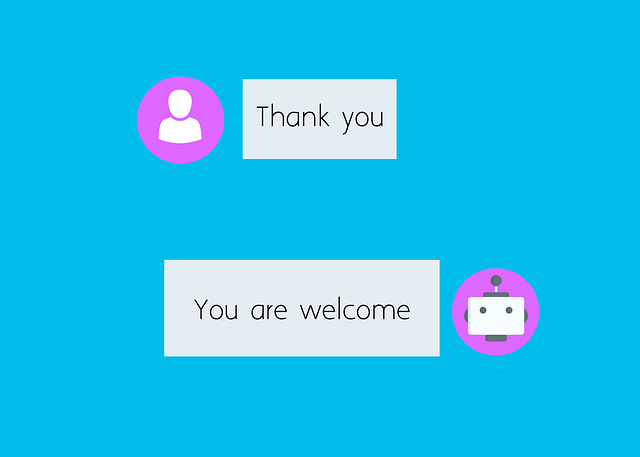Integrating an ecommerce chatbot is a strategic move for businesses aiming to elevate customer experience and drive sales in today's digital landscape. These virtual assistants provide 24/7 support, answer FAQs, guide purchases, collect data, and foster brand loyalty. Designing effective conversational flows involves understanding customer needs, using machine learning, and personalizing interactions based on user history. Measuring success includes response accuracy, customer satisfaction, and reduced handle time, with regular monitoring and iterative improvements crucial for optimal performance.
Live chat chatbots are transforming the way businesses interact with their customers in the competitive world of ecommerce. By integrating these AI-driven tools, retailers can enhance customer service, boost sales, and elevate the overall shopping experience. This article delves into the intricacies of ecommerce chatbot integration, exploring key benefits, designing effective conversational flows, and measuring success for optimal performance. Understand how these virtual assistants can revolutionize your business strategy today.
- Understanding Ecommerce Chatbot Integration
- Key Benefits of Implementing Live Chat Chatbots
- Designing Effective Conversational Flows
- Measuring Success and Optimizing Performance
Understanding Ecommerce Chatbot Integration

In today’s digital era, integrating an ecommerce chatbot on your website is becoming a game-changer for businesses looking to enhance their customer experience and boost sales. These intelligent virtual assistants offer 24/7 availability, enabling seamless interaction with potential buyers and providing instant support. By understanding customer queries and offering personalized product recommendations, ecommerce chatbots can significantly increase conversion rates.
Ecommerce chatbot integration involves strategically placing these automated tools on key pages of your website, such as product category pages or checkout processes. They can answer frequently asked questions, guide users through the purchasing journey, and even facilitate post-purchase support, ensuring customer satisfaction and fostering brand loyalty. This technology allows businesses to collect valuable customer data, enabling them to make informed decisions and tailor marketing strategies accordingly.
Key Benefits of Implementing Live Chat Chatbots

Live chat chatbots offer a multitude of benefits for businesses, especially in the realm of ecommerce. They provide 24/7 customer support, instantly addressing client queries and enhancing user experiences. This availability can significantly boost sales conversion rates as potential buyers receive immediate assistance, reducing shopping cart abandonment.
These chatbots are versatile tools that can handle a wide range of tasks. From answering frequently asked questions to guiding users through product recommendations, they offer personalized interactions, fostering customer loyalty. Ecommerce chatbot integrations also allow for efficient data collection and analysis, providing valuable insights into consumer behavior. This enables businesses to make informed decisions and tailor their strategies accordingly.
Designing Effective Conversational Flows

Designing effective conversational flows is an art for ecommerce chatbots. The key lies in creating natural, human-like interactions that guide users through their shopping journey seamlessly. Start by understanding customer needs and pain points across various stages of the purchase process. Map out potential user queries and craft responses that provide immediate, relevant solutions. A well-designed flow should anticipate user inputs, offer tailored suggestions, and smoothly navigate them to checkouts or product details.
For ecommerce chatbots, conversational flows should be dynamic and adaptive, leveraging machine learning to learn from each interaction. Incorporate branching dialogues that allow users to ask follow-up questions, express preferences, or seek assistance. Personalize the experience by referencing user history, past purchases, or browsing behavior. By doing so, chatbots can offer a more engaging, intuitive, and ultimately successful shopping experience for ecommerce customers.
Measuring Success and Optimizing Performance

Measuring success and optimizing performance are key aspects in evaluating the effectiveness of an ecommerce chatbot. Success is often defined by clear metrics such as response accuracy, customer satisfaction ratings, and reduction in average handle time. An ecommerce chatbot that consistently provides accurate and relevant responses, enhances user experience, and expedites problem-solving can significantly improve operational efficiency.
To optimize performance, regular monitoring and iterative improvements are essential. Analyzing chat logs, gathering customer feedback, and incorporating AI/ML capabilities enable chatbots to learn from interactions, adapt to new patterns, and provide more accurate responses over time. By continuously refining the chatbot’s knowledge base and conversational flows, businesses can ensure that their ecommerce chatbot remains a valuable tool in enhancing customer engagement and driving sales.
Live chat chatbots are transforming the way businesses interact with their customers in the dynamic ecommerce landscape. By integrating these AI-powered tools, retailers can enhance customer service, drive sales, and foster deeper engagement. From streamlining inquiries to providing personalized recommendations, efficient chatbot conversations improve user experiences and set the stage for increased online sales. As the technology continues to evolve, optimizing conversational flows and tracking performance metrics will be key to unlocking the full potential of ecommerce chatbots.
